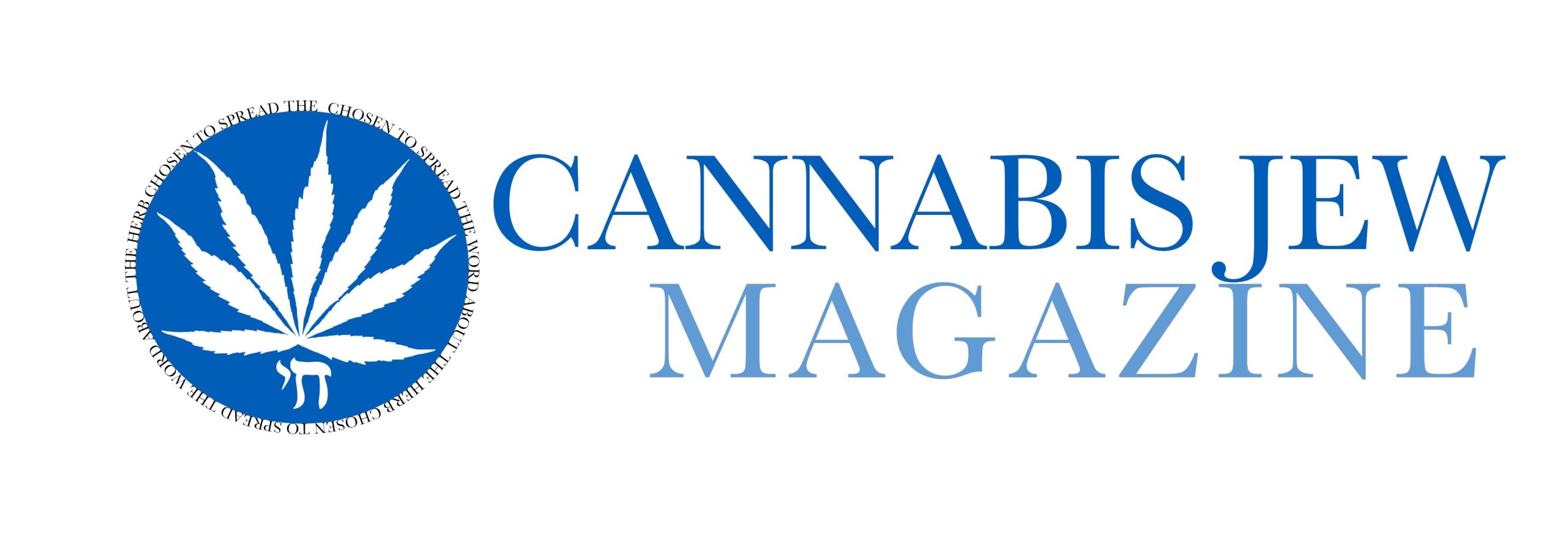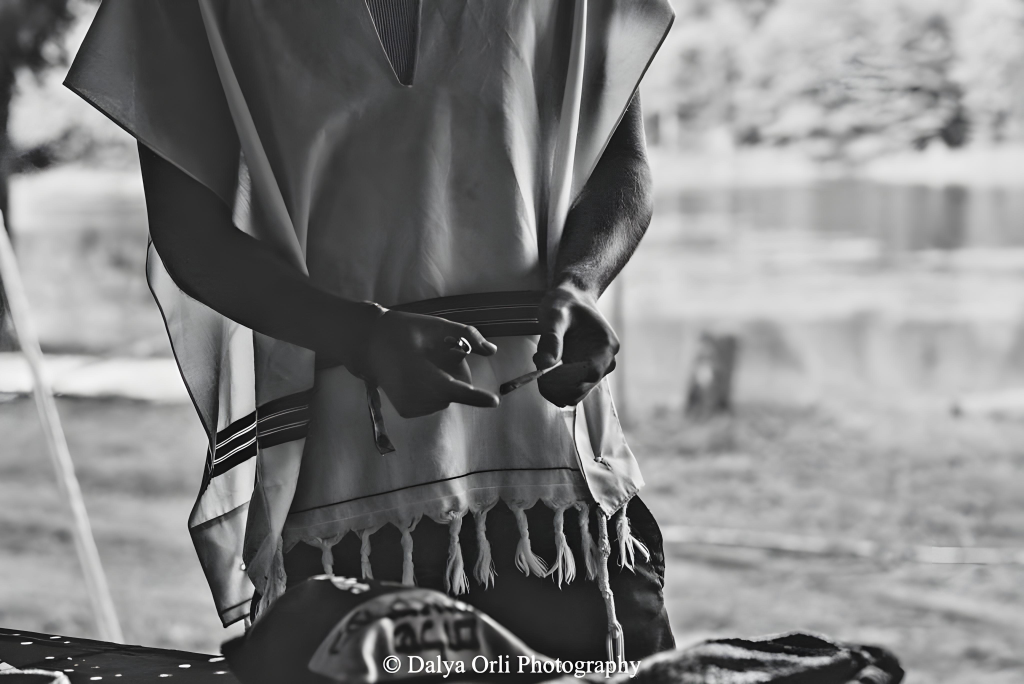Aaron Genuth is a journalist, advocate, and entrepreneur who has worked extensively in the cannabis and psychedelic spaces for over a decade. He has written for cannabis and psychedelic publications including High Times and Lucid News. He is the founder of Darkhei Rephua, a Jewish entheogenic nonprofit organization. Based in New York, he splits his time between Brooklyn and the Catskills.
I arrived at the recent Pushkina Festival in Upstate NY ready for a weekend of euphoric energy, relentless EDM beats, and communal connection. The team of organizers, NaNachville, invited my nonprofit, Darkhei Rephua, to represent with a booth dedicated to mushroom education and products along with our friends from Collar City Mushrooms. The environment is trippy and joyful, and the air is thick with the smell of weed. A perfect setting for my inaugural CJM report.
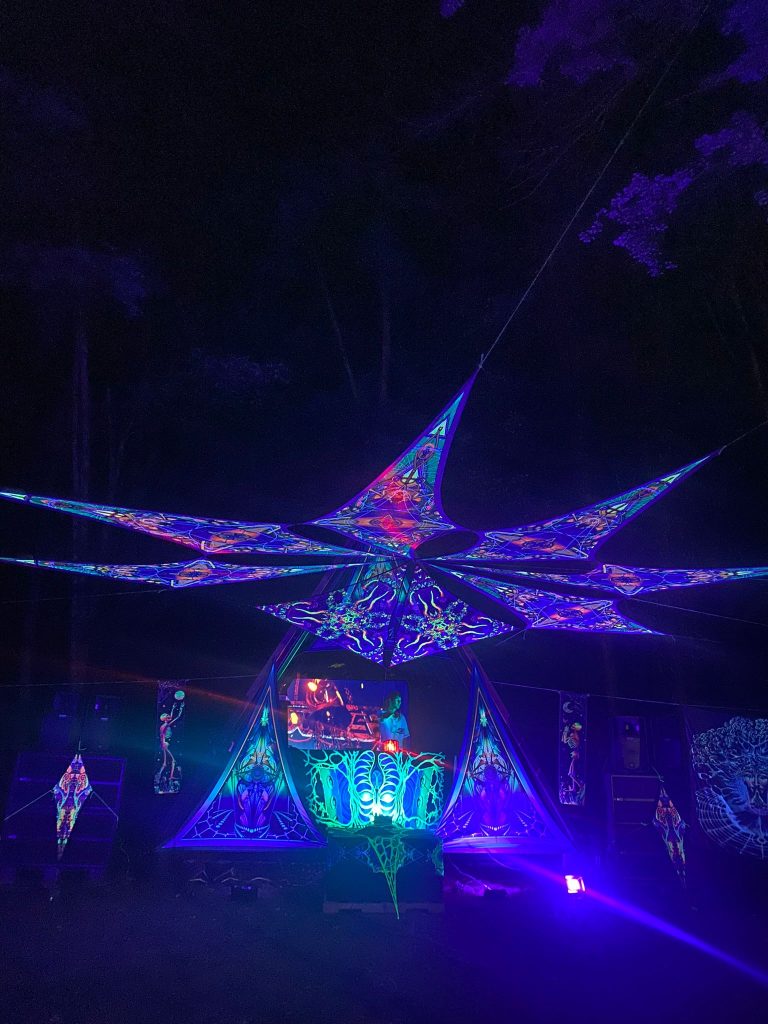
Breslov, Na Nach, Na Nachville
The organizers and many of the DJ’s at Pushkina come from Chassidic or other Orthodox backgrounds and most are devotees of the Na Nach subsect of the Breslov Chassidim (followers of a Chassidic Grand Rabbi and/or lineage). Orthodox Jews are the most traditionally observant of Jewish denominations and Chassidic Jews are the most observant of the Orthodox world.
Chassidus (Chassidism or Hasidism) was initiated in the second half of the 18th century by The Ba’al Shem Tov, a mystic and herbalist who dramatically changed the character of Judaism by proposing that “joy, prayer, and an ecstatic connection with God through physical action were as important, if not more so, than simply living an observant life as a Jew,” according to Rabbi David Cooper’s seminal book God Is A Verb. Breslov Chassidus has massively increased in popularity over the last several decades. Its founder Reb Nachman of Breslov, a direct descendant of the Ba’al Shem Tov, innovated and promoted practices that aligned kabbalah with ritual practice. Some of Reb Nachman’s writings include a directive to seek transcendent joy at all moments ‘even if one must act clownlike’ to do so. His most famous quote – ‘The whole entire world is a very narrow bridge, and the main thing is to have no fear at all’ – has been adapted into a song whose popularity spreads well beyond Breslov and Chassidic circles. Prior to his untimely passing at 38 years old, Reb Nachman moved his following to the town of Uman in the Ukraine, where his tzion (gravesite) remains. As per some of his final instructions, his followers gather there annually en masse for Rosh Hashana (Jewish New Year, celebrated on the 1st and 2nd days of the Hebrew month Tishrei). The gatherings have grown to tens of thousands of mostly male revelers. The main street in the section of Uman surrounding the tzion is called Pushkina.
‘Na Nach’ is shorthand for the mantra ‘Na Nach Nachma Nachman M’Uman’, a kabbalistic breakdown of Reb Nachman’s name that loosely translates to ‘Nachman from Uman’. It is first referenced in a letter uncovered in 1922 by Rav Yisroel Oddesser, also known as Saba Yisrael. In this letter, purportedly transmitted from the next world by Reb Nachman himself, the reader is informed that the ultimate redemption is nigh and their mission is to spread joy and good vibes during this final difficult stretch of golus (exile). Na Nach’s, like the core organizers of the Pushkina Festival, are often affiliated with partying, dancing, and the blaring EDM remixes that blast from rooftop speakers on the vans they can often be seen (and heard) driving around the Holy Land. Interest in the practices and culture of the Na Nach’s has increased in recent years, and more extensive journalistic and scholarly breakdowns of Breslov, Uman, and the Na Nach’s can be found in outlets including the New York Times.
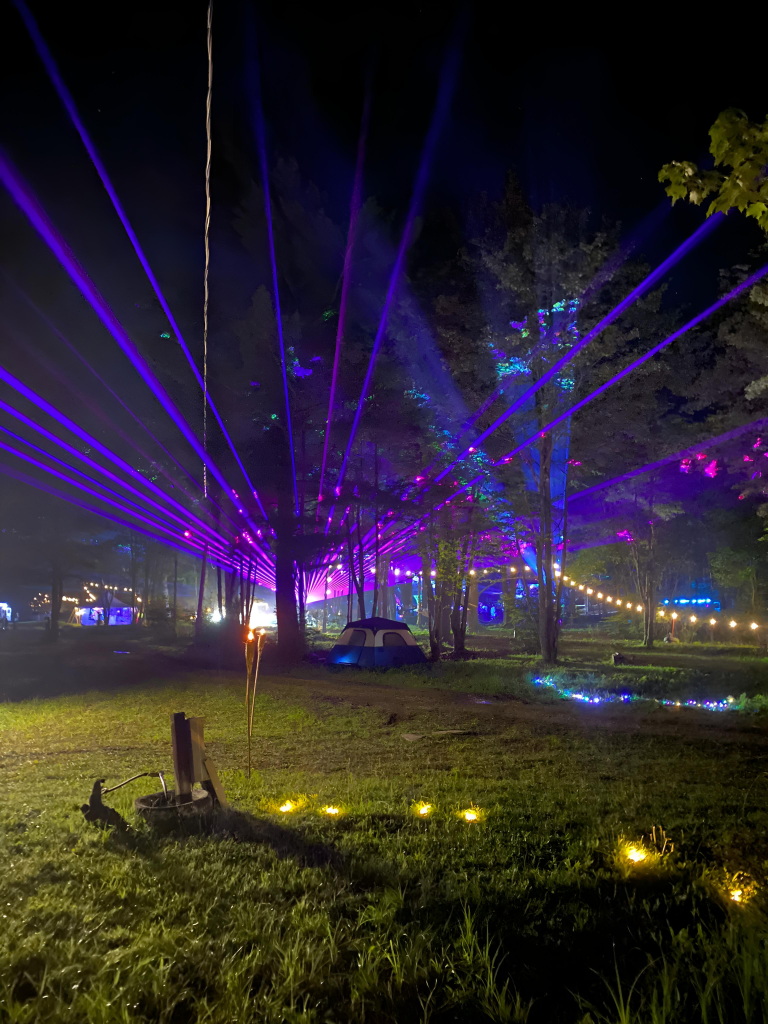
The Pushkina Festival is an offshoot of the development of Na Nach as a communal practice, as well as the growth of festival, camping, and party culture among the Chassidic and Orthodox fringes that is beginning to affect the mainstream of these tightly knit and interconnected communities. At this and other festivals catering to the frum (“pious”) underground, music and visuals blast from the main stage from Thursday afternoon until Friday evening, when amplified sound and vending shuts down for Shabbos before ramping up again at nightfall on Saturday after Havdalah.
One of the organizers, known on the scene as Weezy, described the inspiration for Pushkina and its organizing entity NaNachville. “Several years ago at a music festival, I noticed while among all the music and all the partying that there was a large group of young Jews who lacked a safe place to congregate for Shabbos vibes and shabbos meals.” He reached out to Chaim, a friend and fellow Na Nach, and together they decided to step up to support their community. “At the next festival we brought a small Shabbos meal that included a small pot of chicken soup, hoping a few people would stop by. All the food was finished Friday night.”
Overjoyed with their success and the connections it created, they ramped up their food prep to include the largest soup pit they could find, quickly becoming a reliable staple of the festival experience for young Jews. “We realized that while people go to a festival to partake in fun times, they also enjoyed our Shabbos meals and camp that we set up.”
Over the next couple of years, NaNachville continued to set up camp at many festivals, giving hundreds of people the opportunity for Shabbos food and vibes. When they launched Pushkina Festival in 2022, they quickly sold out the 450 available tickets.
Where cannabis fits in
While much of the Orthodox world has been slow in accepting cannabis as medicine and ‘recreational’ alternative to intoxicants like alcohol, the Na Nach scene has long been associated with weed as a devotional and connective practice. At the Pushkina Festival cannabis use is rampant and constant. Several yards from the main stage, a Weed Shop tent caters to the tastes of revelers with pre-rolled joints, flower, and extracts. Couches are laid out in the tent for consumption and chilling out in between DJ sets.
After setting up my own vending and lounge space a bit further down the trail, I head over to connect with the Weed Shop folks and to look for interesting interview subjects for my inaugural CJM report. Upon arrival I was welcomed by the weekend proprietors, who are sharing a large and expertly rolled joint. I strike up a conversation with Rami, who is rocking tzitzit and a yarmulke while preparing to put on tefillin, a set of small black leather boxes with leather straps containing scrolls of parchment inscribed with verses from the Torah. He shares that he was raised in a traditional Orthodox family as the son, grandson, and great grandson of rabbis. Rami grew up in Los Angeles, living there until the age of 16. From there his family moved to the Orthodox enclave of Monsey, a suburb about 25 miles outside of New York City. He has also spent time in Israel, attending Yeshiva and ‘enjoying life out there.’ Rami has also spent time trimming ganja in Humboldt County with legacy growers. While chatting, Rami and I discover that we have had strangely parallel lives, albeit with an age gap of almost two decades. Both of us lived in the Venice, California area and attended the Orthodox shul Pacific Jewish Center on the Venice boardwalk as children before our families moved to Monsey.
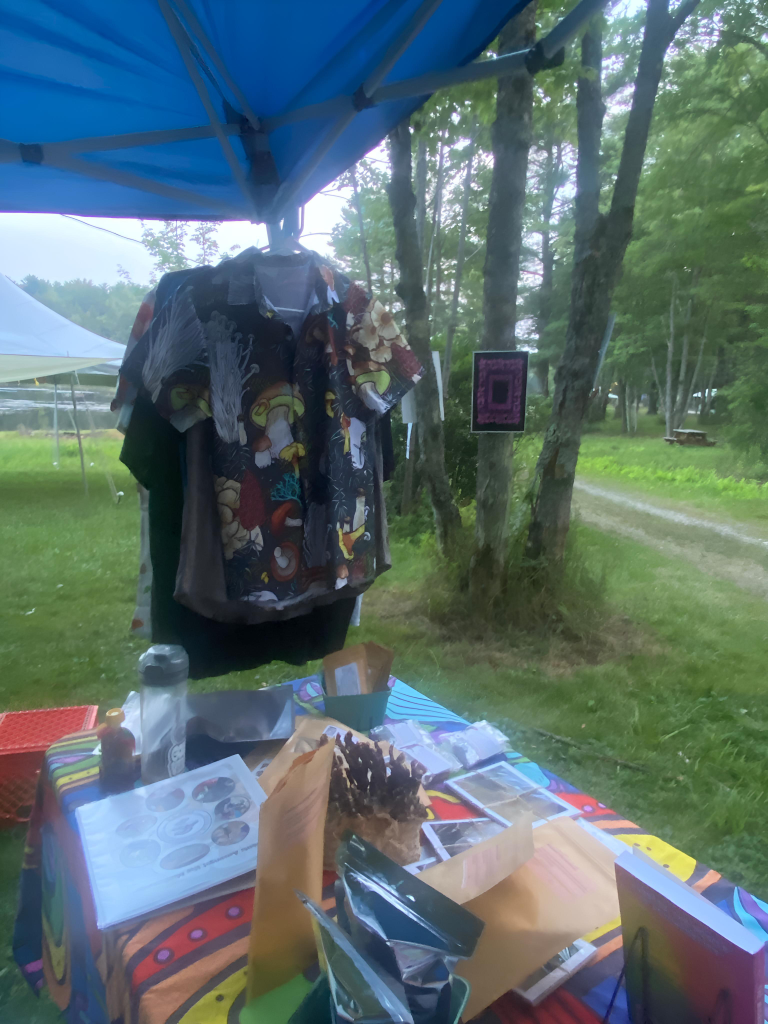
I ask Rami about his personal experience with cannabis, and how it has being accepted in the Orthodox mainstream. “Growing up in Venice, weed was a pretty everyday part of life and I was familiar with the herb from like the age of 6 or something. I never really perceived it as much more than a leisurely pastime, and even when I began smoking at around 13, it didn’t feel like a ‘rebellious’ or ‘druggy’ thing, which is definitely a unique experience compared to most other Orthodox kids out there. Since then, I’ve felt that my relationship with cannabis came from a pretty healthy and mindful place. I suffered a lot from anxiety and depression before some pretty intensive therapy, and during those times weed was really a creative and emotional lifeline for me. It helped me express my pain artistically, relax my panic attacks, and most importantly slow my hyperactive brain down enough to sort out my thoughts instead of letting them pull me into these (unhealthy) loops.”
Having myself gotten the heck out of Monsey as young and completely as possible, I’m curious about how acceptable cannabis has become in the stomping grounds of my youth, particularly after years of medical acceptance followed by recreational legalization. While there is clearly still some social and leadership resistance, Rami reports a changing scene. “It’s certainly become more mainstream. I’ve smoked in New Square, I’ve even smoked outside Evergreen (a completely kosher supermarket), and nobody really seems to ever give me a second look. I do know lots of kids who experienced some over the top reactions from the community in response to their cannabis use, but that’s been the norm across society in America for a while, Jewish community notwithstanding.” He’s also seen it as an increasing point of connection with local users. “I’m always happy when I see a chasid smoking somewhere, and usually make a point to go over and shmooze about the plant and Torah, and roll one up with a fellow Jewish stoner.”
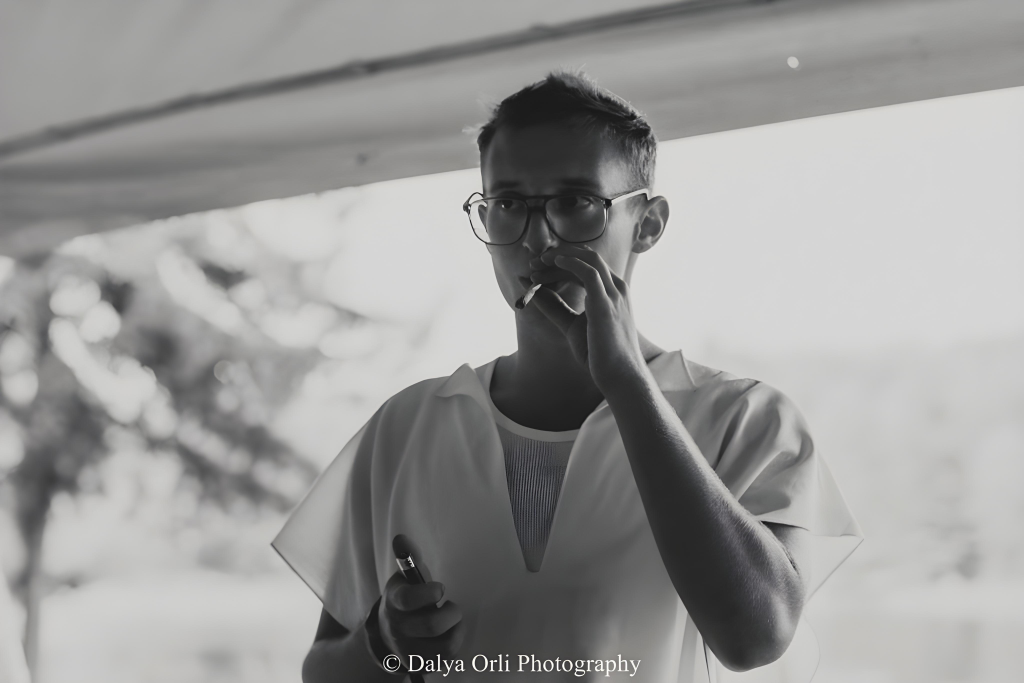
Recognizing that there are still elements of stigma and resistance in the Orthodox world, Rami remains optimistic about the future of cannabis culture. “I really hope to see more open mindedness on the matter. In general I’ve been aware of a bit of an expansion of the ‘box’ in our community, and I really hope that medicinal herb use will be included in a new, non judgmental, and open minded Judaism. I believe the Torah intends for us to be healthy, open minded, loving individuals, caring for ourselves and each other, and I believe very firmly that cannabis and cannabis culture can be strong catalysts for all these principles. I hope that more religious Jews will continue to shift their mindsets to realize that everyone’s got their own struggles, their own methods of healing, and ultimately their own means of recreation.” He notes his assessment that the Orthodox world is often slower than the mainstream in accepting social progress, and encourages the process of moving beyond those hangups. “Let’s just love each other and forget about all that!”
Wandering off from the Weed Shop, I bump into Jessie Katz near the dance floor. Jessie and I had chatted at my Shroom tent about cannabis and Judaism earlier in the day. One of the relatively few folks that isn’t from a Heimish background, Jessie is at Pushkina because she’s been invited to perform her first ever gig as a progressive psytrance DJ. Jessie and I excitedly bond over our shared interest in psychedelic healing, and her career and educational path. Jessie is starting an MS in Counseling Psychology this Fall, working towards becoming a psychedelic-assisted therapist. She intends to incorporate music meditation with psytrance and personally uses cannabis to meditate with music, sharing that “It helps me to hear the music more powerfully.” I ask Jessie about her relationship to cannabis and Judaism and how they’ve intersected. Raised in a traditionally practicing Conservative Jewish family, “I was raised to think that cannabis was bad, and that it was against myself and against God to smoke or consume it.” That attitude initially caused her to distance herself from Jewish practice. “I continued to feel drawn towards weed and other psychedelics, simultaneously moving away from Judaism because I felt that the two contradicted.” That relationship started to change when she moved to Israel in 2013 and spent several years there. “I had a different experience living in Tel Aviv and was able to connect more to the cultural, communal side of being Jewish, without so much of the religious aspect. For example, I would smoke weed with friends at casual shabbat dinners.”
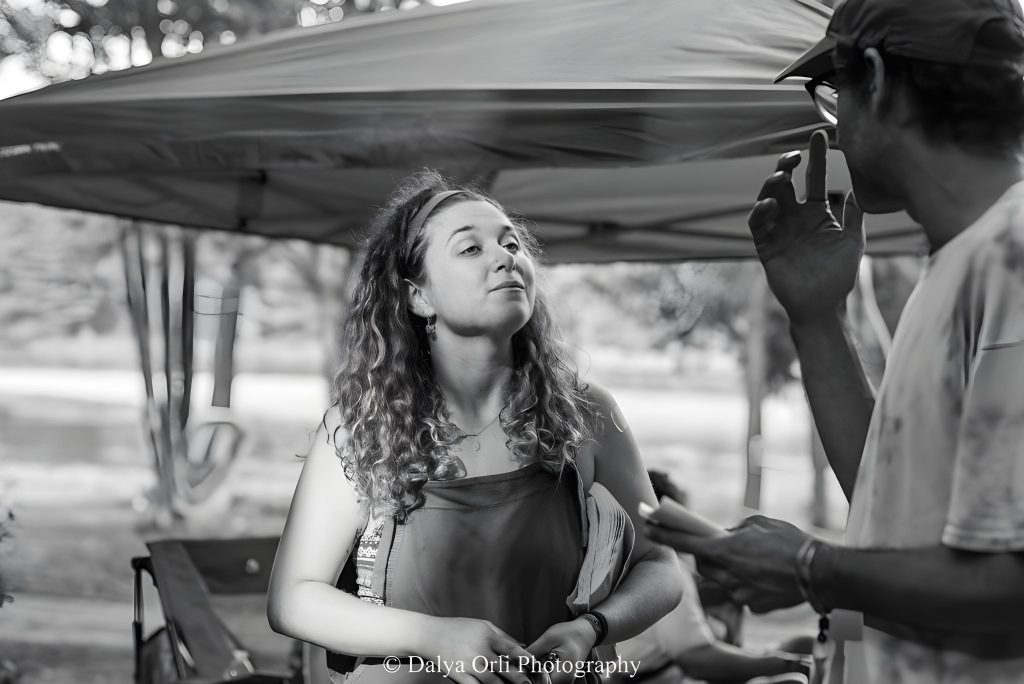
Having joined for her Thursday DJ gig, Jessie stayed through Shabbos, which featured heartfelt song and prayer and what seemed like a neverending buffet of kosher food. “I had a great time. I was nervous going into it but I found it to be a very friendly and open-minded environment where we connected through music. It felt like I was able to find some common ground between Judaism, substances, and music, when I had previously felt that they contradicted each other. It caused me to take a second to reflect on my relationship with Judaism.”
Rami shares a similarly positive and inspired assessment. “A lot of my hopes for the Jewish world were strongly reflected at the festival. It was so inspiring for me to see every kind of Jew just connecting with each other and themselves, and feeling the spirit of Shabbos in the air, along with all the cannabis smoke. I really felt that the prevalence of cannabis there reflected a sharing of the plant which so many of us love for its healing powers and ability to just bring out the good vibes.”
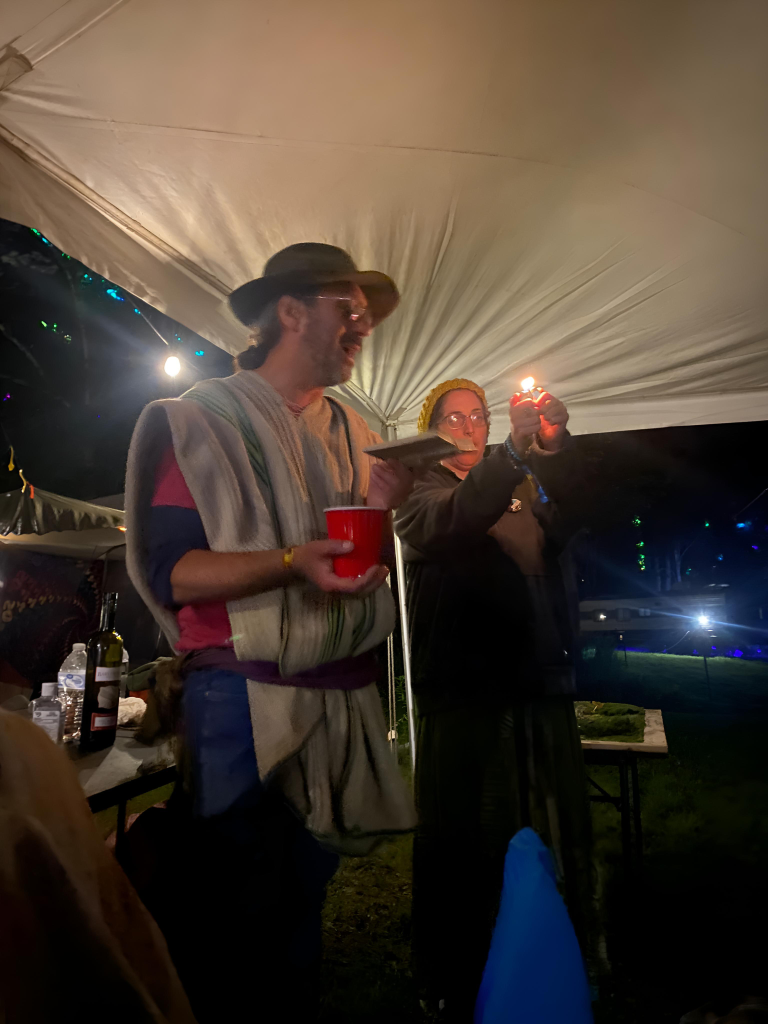
When the Pushkina Festival draws to a close on Sunday afternoon, many of the Na Nachs remain, singing songs, sharing pearls of Chassidic wisdom, and planning ahead for upcoming festivals, including their ultimate annual gathering in Uman for Rosh Hashana. They will all attend despite the current war and unrest in Ukraine, as most have for the last several years. The only major recent disruption came in 2020 when local and national authorities shut down access to the town due to Covid. Despite this, several thousand celebrants attempted to enter, with most being denied access. Many of the pilgrims view their Uman experience as essential to their spiritual practice and view the pandemic and war as challenges to be met with the fierce joy and faith that is the hallmark of their practice. Another indicator of this passionate devotion is one of Reb Nachman’s famous quotes that is partially emblazoned on the hoodie that I am gifted by the organizers at the closing of Pushkina;
האש שלי תוקד עד ביאת המשיח ‘My fire will burn until the arrival of the Messiah.’
